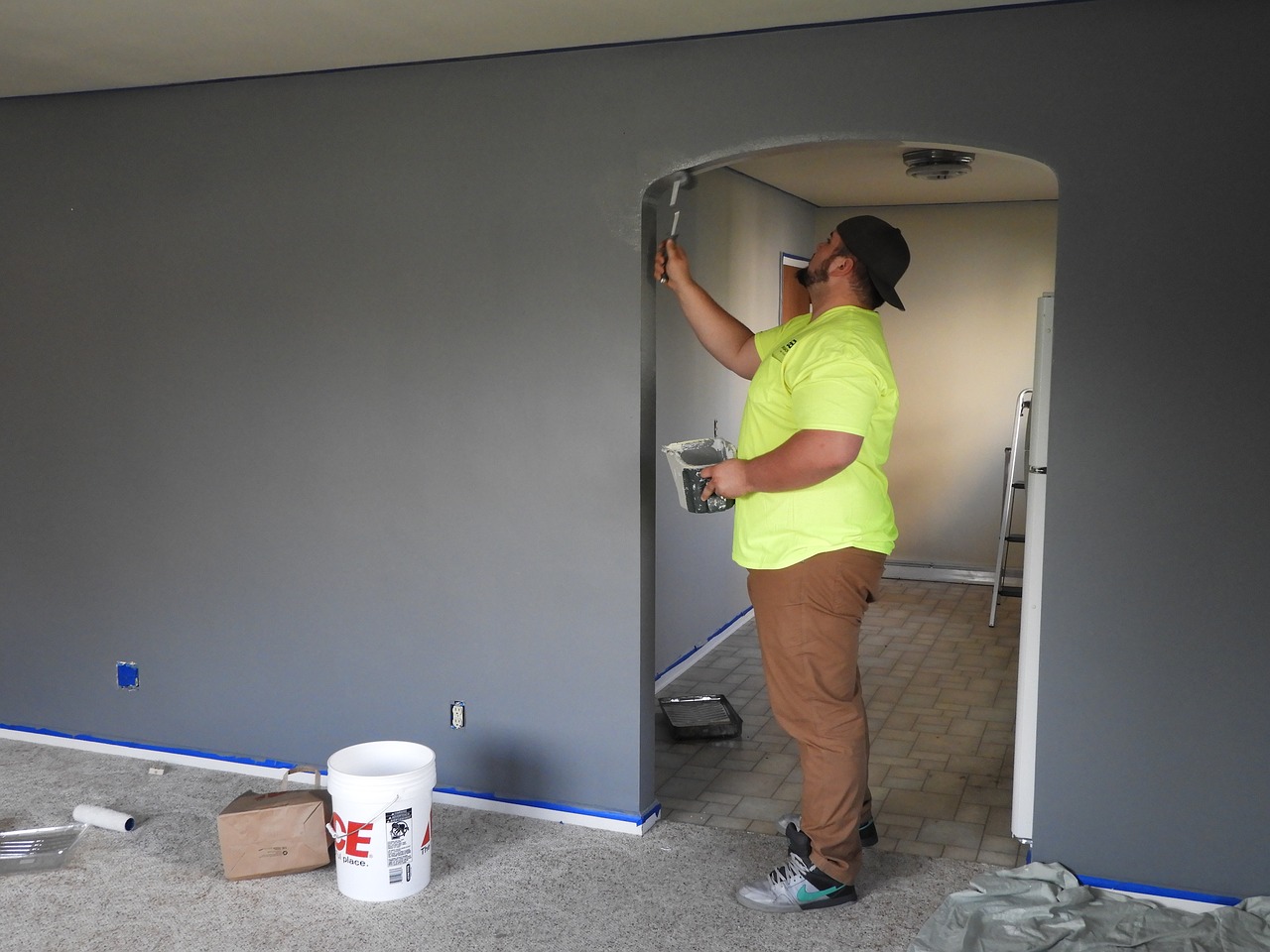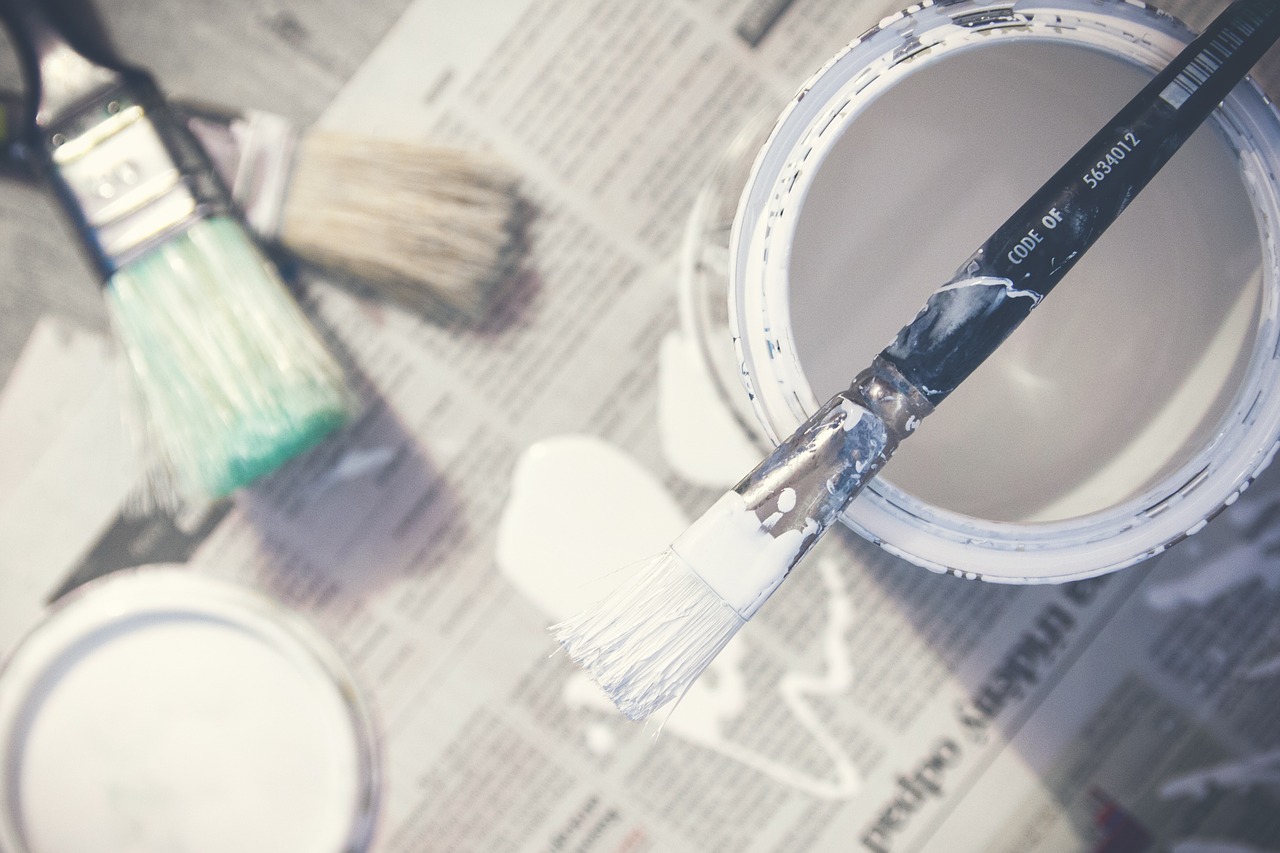Painting the interior walls is not only fun, but it also gives your home a fresh look. It is an easy job and relatively inexpensive. While the project may seem straightforward, it also comes with its share of challenges. That is why if you are looking to paint your interior walls, you need to understand specific procedures before you start mixing your paint.

Once you master the techniques, you will have a seamless experience from the beginning to your project’s end. Read on to understand the best way to paint interior walls.
Plan and Get Prepared
Start by identifying the areas that need painting. This will help you know how much paint is required and how much time the project will take. If you plan to paint the whole interior part of your home, consider starting with larger portions before going to the smaller areas.
Choose the Color
Most people have different perceptions about colors. This is a crucial consideration, especially when you plan to paint different rooms with unique colors. If you do not have a favorite color, don’t worry about that. You can try and figure out how you want your rooms to appear after the painting.
If some of your rooms are painted, you can go for the same color or blend it with another color of your choice. You can also choose a color that corresponds with the existing decor.
Once you settle on a few color types, get shades and samples and test them to visualize the final work. You can also take advantage of our color selection services our company offers. Check on the website, we will identify multiple color choices, and select your most preferred.
Gather Your Tools and Materials
For a successful painting project, you need painting tools and materials. Ensure you assemble all of them before you start your project. This will give you a seamless experience, and you won’t have to stop along the way to look for missing tools. Here is what you need.
• Paint
• Paintbrush
• Paint roller
• Sandpaper
• Several rags
• Drop cloths
• A paint tray
• Extension pole for the paint roller.
• Putty knife
• Painters tape
Choose Paint Quantity
Paint quantity depends on the size of the area you want to paint. Determining the paint quantity is the best way to paint interior walls, and it will give you a seamless work experience, and you won’t need to go back to the home improvement store in the middle of your project to buy more paint.
Sometimes, it may not be easy to know the right quantity needed. In this case, you can try and use a calculator to get an estimate of the required paint per square foot.
Turn on Lights and Ventilate the Room
Painting in a dark room can be frustrating. So ensure you turn on the lights to give you a clear vision of the room. Also, don’t forget to ventilate the room. You do not want to suffocate there once you start the job. Open the doors and windows to let in fresh air until the paint dries off.
Cover Furniture
Ensure you cover furniture and other items in the room to prevent the paint from spilling over. You can use seat covers or pieces of clothes to cover the items. If the room has no adequate space for easy movement when painting, consider moving the furniture to other empty available spaces.
Prepare the Walls
Before you apply the paint, ensure you prepare the wall surface. Scrape off the sand, debris, and patches and fill the holes, dents, and cracks to create a perfect texture. This is an area that most people often neglect when painting walls, but it is worth it. A wall that has dents can turn out poorly done regardless of the paint color, cost, or thickness.
Apply Painter’s Tape
Run the painter’s tape along the area that separates the wall and the ceiling to prevent the paint from touching the ceiling. It would be best to also run the tap in the space between the wall and doors and windows.
Mix the Paint
If you bought paint that is already mixed, you wouldn’t have to do it again. If not, you will need to mix the paint. Use a wooden stick or a chuck metal and stir the paint well. You will have to continue stirring it until you’re done with the project. If there is a slight color variation with your paint, consider pouring it into a large packet for convenience purposes.

Start Painting
If you had earlier identified where to start painting, then go ahead with it. Start by painting the edges, moving from top-down as you move from to room. Use the lighter colors and wait until it dries before you apply the dark paint.
You can then use another coat to cover up the dark paint to get an excellent finishing. As you paint, ensure you stay away from the ceiling and other spots that you do not want the paint to touch.
Clean Up the Work Area
When done with your work, tidy up the area by removing drop cloths and dry them outside. Depending on the paint you used, you can use mineral spirits, soap, and water to clean the paint brushes. Throw away all plastic sheeting and give the wall a day before you remove the painter’s tape.
The Bottom Line For Painting Interior Walls
Using the tips above will give you a seamless experience when painting the interior of your walls. You want to be sure that the final work is worth your time and money. So, take your time and analyze the entire process before you start painting. Remember, you do not need any prior skills if you apply the tips above.
This post is a collaboration and may contain relevant, relatable affiliate links. All opinions are our own and for informational purposes.
